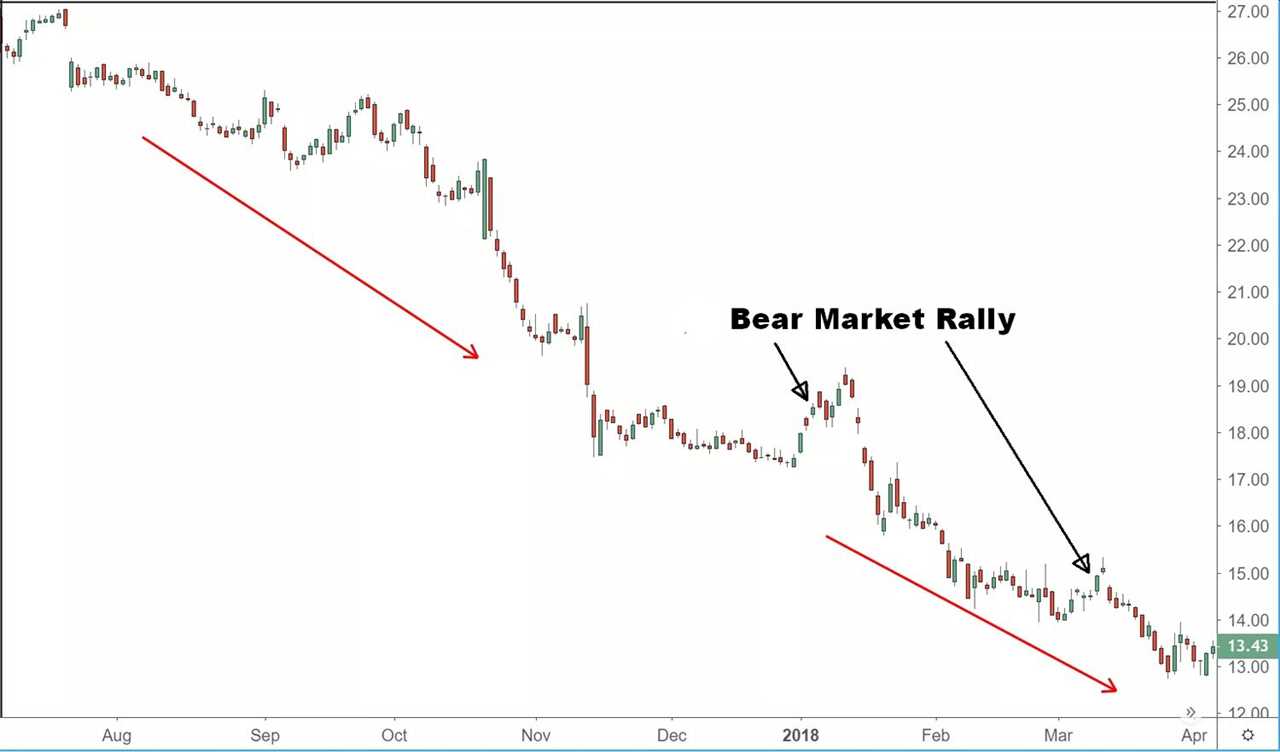Bear Market Guide: Definition, Phases, Examples & Investing Strategies
A bear market refers to a prolonged period of declining stock prices and a general pessimistic sentiment in the financial markets. In a bear market, investors are typically cautious and tend to sell off their investments, leading to further declines in prices.
Definition

A bear market is commonly defined as a decline of 20% or more in stock prices over a sustained period, usually lasting several months or longer. It is the opposite of a bull market, where stock prices are rising and investor confidence is high.
Phases

A bear market typically goes through several phases:
Examples
Some notable examples of bear markets include the Great Depression in the 1930s, the dot-com bubble burst in the early 2000s, and the global financial crisis in 2008. These periods were characterized by significant declines in stock prices and widespread economic downturns.
Investing Strategies

During a bear market, investors may employ various strategies to protect their portfolios and potentially profit from the downturn:
- Diversification: Spreading investments across different asset classes can help reduce risk during a bear market.
- Short Selling: Investors can profit from falling stock prices by borrowing shares and selling them, with the intention of buying them back at a lower price in the future.
- Defensive Stocks: Investing in sectors that are less affected by economic downturns, such as healthcare or consumer staples, can provide some stability during a bear market.
It is important to note that investing in a bear market carries significant risks, and investors should carefully consider their risk tolerance and investment objectives before making any decisions.
A bear market is a term used in the financial world to describe a prolonged period of declining stock prices, typically accompanied by negative investor sentiment. It is the opposite of a bull market, which is characterized by rising stock prices and positive investor sentiment.
There are several key characteristics that define a bear market:
1. Declining Stock Prices
The most obvious characteristic of a bear market is a sustained period of declining stock prices. This can be caused by a variety of factors, such as economic downturns, geopolitical tensions, or changes in investor sentiment.
2. Negative Investor Sentiment
In a bear market, investors generally have a pessimistic outlook on the economy and the stock market. They may be concerned about factors such as slowing economic growth, high levels of debt, or political instability. This negative sentiment can further drive down stock prices.
3. Increased Volatility
Bear markets are often characterized by increased volatility in the stock market. This means that stock prices can fluctuate widely from day to day, making it difficult for investors to predict market movements and make informed investment decisions.
4. Lower Trading Volumes
During a bear market, trading volumes in the stock market tend to be lower than during a bull market. This is because many investors may be hesitant to buy or sell stocks, preferring to wait for more favorable market conditions.
5. Economic Downturn
A bear market is often associated with an economic downturn or recession. This can be caused by factors such as a decline in consumer spending, a slowdown in business investment, or a contraction in the overall economy. These economic factors can contribute to the decline in stock prices.
Overall, a bear market is a challenging and uncertain time for investors. It requires careful analysis and strategic decision-making to navigate the market and minimize potential losses. Investors may choose to adopt defensive investment strategies, such as diversifying their portfolios, investing in defensive sectors, or holding cash reserves.
Phases of a Bear Market: Recognition, Panic, and Capitulation
A bear market is a period of declining stock prices, typically accompanied by negative investor sentiment and widespread selling. It is characterized by a downward trend in the overall market, with many individual stocks experiencing significant losses.
During a bear market, there are typically three distinct phases that investors should be aware of: recognition, panic, and capitulation.
Recognition: The recognition phase is the initial stage of a bear market, where investors start to realize that the market is in a downward trend. This phase is often marked by negative news and economic indicators that point to a weakening economy. Investors may begin to sell their stocks and move into safer assets, such as bonds or cash. However, not all investors may recognize the bear market at this stage, and some may still hold onto their positions in the hopes of a rebound.
Panic: The panic phase is characterized by a rapid and widespread selling of stocks. During this phase, fear and uncertainty grip the market, leading to a sharp decline in prices. Investors may rush to sell their holdings, fearing further losses. This selling pressure can exacerbate the downward trend and lead to a further decline in stock prices. The panic phase is often marked by high trading volumes and increased volatility.
Capitulation: The capitulation phase is the final stage of a bear market, where investors have given up hope of a recovery and sell their remaining positions. This phase is often marked by extreme pessimism and a sense of despair in the market. Prices may reach their lowest point during this phase, as selling pressure subsides and buyers begin to enter the market. Capitulation can be seen as a sign of a market bottom, as it often precedes a period of recovery and a new bull market.
Disclaimer: This article is for informational purposes only and should not be taken as financial advice. Investing in the stock market involves risk, and past performance is not indicative of future results. It is always recommended to consult with a qualified financial advisor before making any investment decisions.

Emily Bibb simplifies finance through bestselling books and articles, bridging complex concepts for everyday understanding. Engaging audiences via social media, she shares insights for financial success. Active in seminars and philanthropy, Bibb aims to create a more financially informed society, driven by her passion for empowering others.
